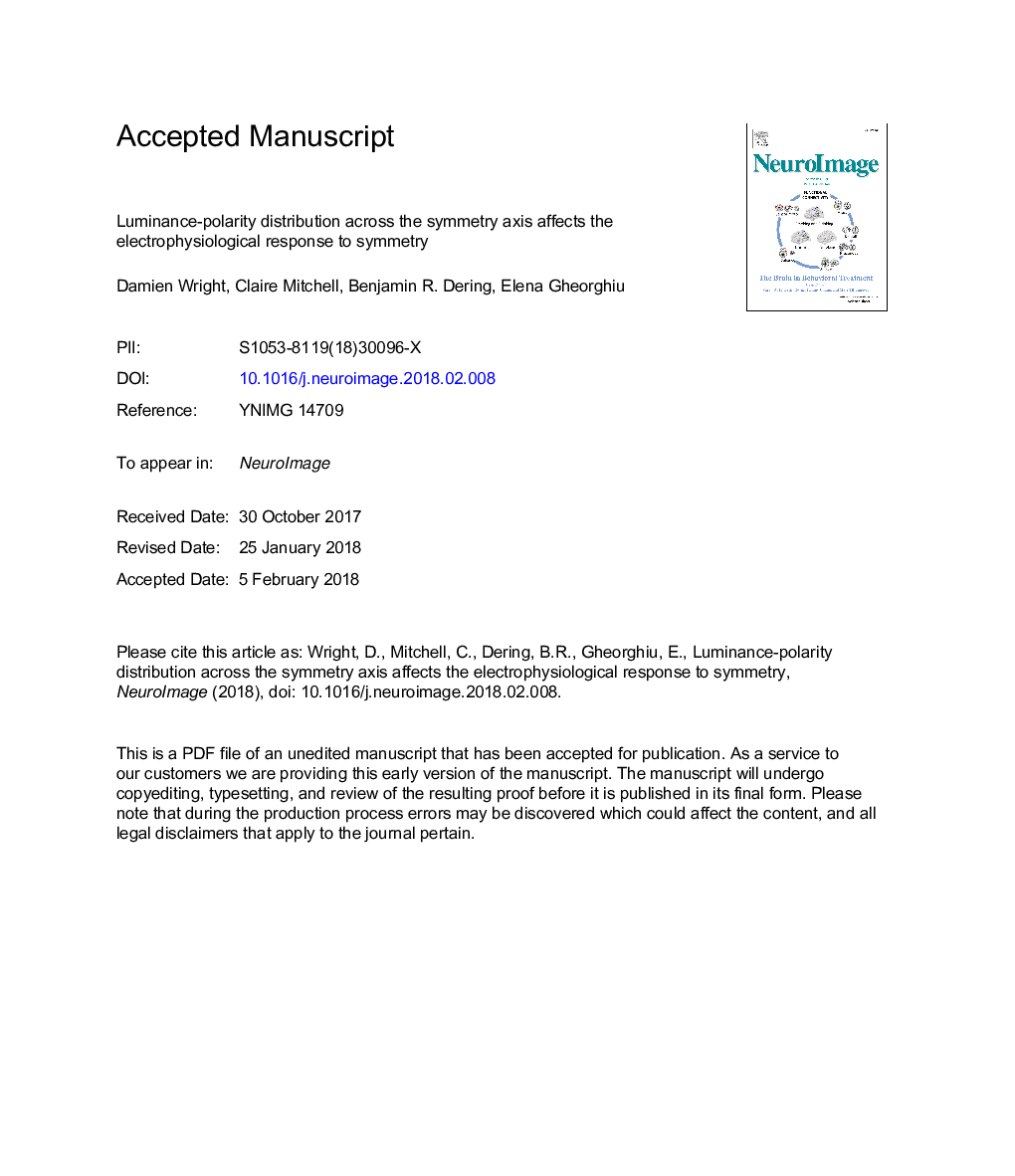| کد مقاله | کد نشریه | سال انتشار | مقاله انگلیسی | نسخه تمام متن |
|---|---|---|---|---|
| 8686988 | 1580837 | 2018 | 36 صفحه PDF | دانلود رایگان |
عنوان انگلیسی مقاله ISI
Luminance-polarity distribution across the symmetry axis affects the electrophysiological response to symmetry
ترجمه فارسی عنوان
توزیع قطبی نور در سراسر محور تقارن بر پاسخ الکتروفیزیولوژیکی به تقارن تاثیر می گذارد
دانلود مقاله + سفارش ترجمه
دانلود مقاله ISI انگلیسی
رایگان برای ایرانیان
موضوعات مرتبط
علوم زیستی و بیوفناوری
علم عصب شناسی
علوم اعصاب شناختی
چکیده انگلیسی
Electrophysiological studies of symmetry have found a difference wave termed the Sustained Posterior Negativity (SPN) related to the presence of symmetry. Yet the extent to which the SPN is modulated by luminance-polarity and colour content is unknown. Here we examine how luminance-polarity distribution across the symmetry axis, grouping by luminance polarity, and the number of colours in the stimuli, modulate the SPN. Stimuli were dot patterns arranged either symmetrically or quasi-randomly. There were several arrangements: 'segregated'-symmetric dots were of one polarity and randomly-positioned dots were of the other; 'unsegregated'-symmetric dots were of both polarities in equal proportions; 'anti-symmetric'-dots were of opposite polarity across the symmetry axis; 'polarity-grouped anti-symmetric'-this is the same as anti-symmetric but with half the pattern of one polarity and the other half of opposite polarity; multi-colour symmetric patterns made of two, three to four colours. We found that the SPN is: (i) reduced by the amount of position-symmetry, (ii) sensitive to luminance-polarity mismatch across the symmetry axis, and (iii) not modulated by the number of colours in the stimuli. Our results show that the sustained nature of the SPN coincides with the late onset of a topographic microstate sensitive to symmetry. These findings emphasise the importance of not only position symmetry, but also luminance polarity matching across the symmetry axis.
ناشر
Database: Elsevier - ScienceDirect (ساینس دایرکت)
Journal: NeuroImage - Volume 173, June 2018, Pages 484-497
Journal: NeuroImage - Volume 173, June 2018, Pages 484-497
نویسندگان
Damien Wright, Claire Mitchell, Benjamin R. Dering, Elena Gheorghiu,
